Error message
No matching provider found.Error message
No matching provider found.Calcium Linked to Increased Risk of Heart Disease and Death in Patients with Kidney Disease
Kidney patients who take calcium supplements to lower their phosphorous levels may be at a 22 per cent higher risk of death than those who take other non-calcium based treatments, according to a new study by University of Toronto and Women’s College Hospital researchers.
The study questions the long-time practice of prescribing calcium to lower phosphate levels in patients with chronic kidney disease. The researchers suggest some of the calcium is absorbed into the blood stream and may expedite hardening of the arteries, leading to a higher risk of heart disease and even death. Cardiovascular disease is a leading cause of death for people with chronic kidney disease.
“Doctors commonly prescribe calcium supplements to prevent elevated phosphate levels, which can damage the body, but a growing number of studies have shown calcium supplements may actually increase the risk of heart disease,” said Sophie Jamal, an associate professor of medicine at the University of Toronto and physician at Women’s College Hospital.
“Our study validates these claims and, for the first time, shows the long-term consequences of taking calcium supplements can be dangerous for patients with kidney disease,” Jamal said
As part of their analysis, researchers reviewed 11 randomized, controlled studies that included more than 4,600 patients. The researchers assessed the risk of heart disease, including heart attack, stroke, hardening of the arteries and death among individuals prescribed the medication containing calcium and those prescribed the medication without calcium. They found:
- A 22 per cent reduction in death among patients who took non-calcium based treatments sevelamer and lanthanum.
- Less artery calcification (hardening) in patients who did not take calcium supplements.
Researchers suggest non-calcium containing treatments be used as a first line of treatment to lower phosphate for patients with chronic kidney disease.
“The findings of our study provide the best evidence as to what doctors should be prescribing their patients, but further research is necessary to help us understand how exactly calcium increases the risk of death, if non calcium-based treatments reduce the risk of death, and whether certain types of treatments may be more effective and beneficial than others,” said Jamal.

Optimize this page for search engines by customizing the Meta Title and Meta Description fields.
Use the Google Search Result Preview Tool to test different content ideas.
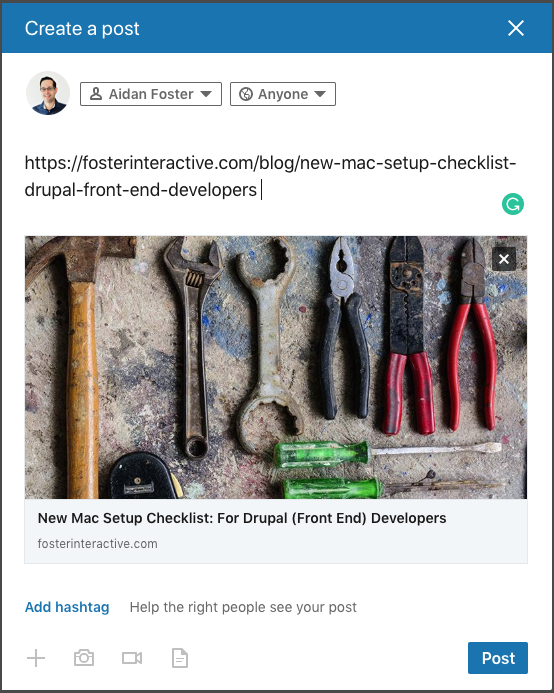
Select a Meta Image to tell a social media platform what image to use when sharing.
If blank, different social platforms like LinkedIn will randomly select an image on the page to appear on shared posts.
Posts with images generally perform better on social media so it is worth selecting an engaging image.
Error message
No matching provider found.Networking for the future of health care
Over 700 first-year medical students from across Ontario gathered in Toronto to talk about the importance of social networking in medicine and to begin developing new skills during the Ontario Medical Students Weekend (OMSW). The annual event was hosted at the Metro Toronto Convention Centre from October 18 - 20.
This year’s theme, “Medicine is Social”, reflected the growing role of technology in day-to-day life. As more people connect using platforms like Facebook and Twitter, many doctors are also increasing their online presence to help both their patients and the public.
It’s a concept that was woven into several of the weekend’s activities.
“People, even if they’re far apart, will be tweeting at each other, and engaging in a social determinants of health forum through Twitter,” said Latif Murji, OMSW co-chair.
The weekend gave participants a chance to meet students from other parts of Ontario.
“It’s nice to know what other people are doing at other schools, how their curriculum is set out, and to network, because these are going to be my colleagues in the future,” said Elliott Cohen, a student at Queen’s University in Kingston.
The three-day event also featured lectures from influential physicians, and introduced medical students to some basic clinical skills such as intubation, casting and baby delivery.
“A lot of us won’t be able to practice any of this until we start our clerkships, or even our residency, so having that glimpse of the types of skills that we can do definitely is a good start to the year,” said François Doiron, who is studying at the Northern Ontario School of Medicine.
OMSW Co-chair Sabrina Nurmohamed explained that Ontario’s medical community is unique, which makes the conference a valuable experience for participants.
“We have a huge density of hospitals, physicians, inter-professional practices, and so we want medical students to embrace this role. I think that once you enter medicine, it’s really easy to get narrow, insular in what you think about, and what you plan for, and we want people to think big and get excited about their future ahead,” she said.
More than 50 exhibitors, including universities and community hospitals, also welcomed delegates during the OMSW Career Fair, showcasing pre-clerkship, clerkship and elective opportunities.

Optimize this page for search engines by customizing the Meta Title and Meta Description fields.
Use the Google Search Result Preview Tool to test different content ideas.

Select a Meta Image to tell a social media platform what image to use when sharing.
If blank, different social platforms like LinkedIn will randomly select an image on the page to appear on shared posts.
Posts with images generally perform better on social media so it is worth selecting an engaging image.
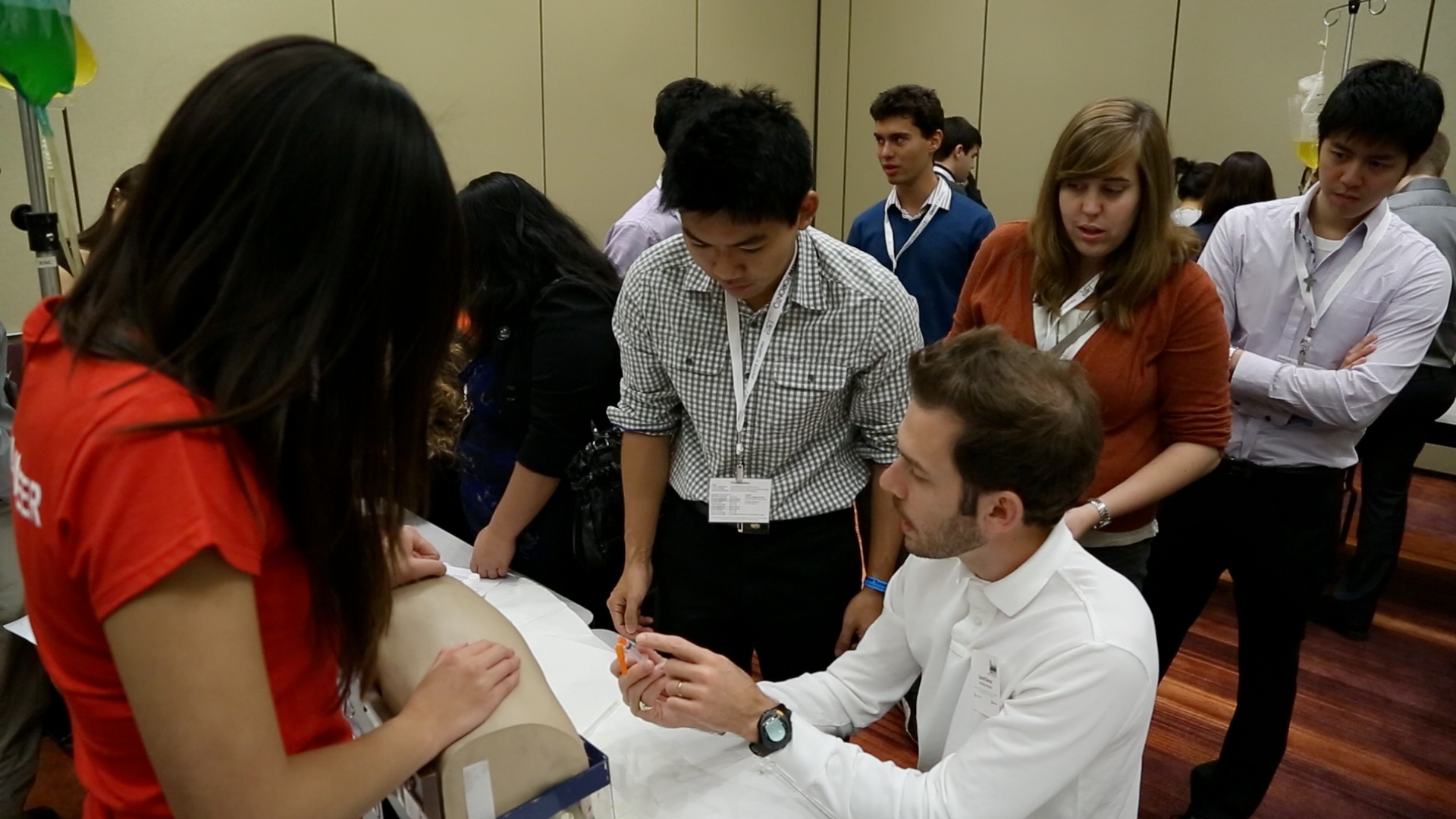
Error message
No matching provider found.Predicting the Fate of Stem Cells
University of Toronto researchers have developed a method that can rapidly screen human stem cells and better control what they will turn into. The technology could have potential use in regenerative medicine and drug development. Findings are published in this week's issue of the journal Nature Methods.
“The work allows for a better understanding of how to turn stem cells into clinically useful cell types more efficiently,” according to Emanuel Nazareth, a PhD student at the Institute of Biomaterials & Biomedical Engineering (IBBME) at the University of Toronto. The research comes out of the lab of Professor Peter Zandstra, Canada Research Chair in Bioengineering at U of T.
The researchers used human pluripotent stem cells (hPSC), cells which have the potential to differentiate and eventually become any type of cell in the body. But the key to getting stem cells to grow into specific types of cells, such as skin cells or heart tissue, is to grow them in the right environment in culture, and there have been challenges in getting those environments (which vary for different types of stem cells) just right, Nazareth said.
The researchers developed a high-throughput platform, which uses robotics and automation to test many compounds or drugs at once, with controllable environments to screen hPSCs in. With it, they can control the size of the stem cell colony, the density of cells, and other parameters in order to better study characteristics of the cells as they differentiate or turn into other cell types. Studies were done using stem cells in micro-environments optimized for screening and observing how they behaved when chemical changes were introduced.
It was found that two specific proteins within stem cells, Oct4 and Sox2, can be used to track the four major early cell fate types that stem cells can turn into, allowing four screens to be performed at once.
“One of the most frustrating challenges is that we have different research protocols for different cell types. But as it turns out, very often those protocols don’t work across many different cell lines,” Nazareth said.
The work also provides a way to study differences across cell lines that can be used to predict certain genetic information, such as abnormal chromosomes. What’s more, these predictions can be done in a fraction of the time compared to other existing techniques, and for a substantially lower cost compared to other testing and screening methods.
“We anticipate this technology will underpin new strategies to identify cell fate control molecules, or even drugs, for a number of different stem cell types,” Zandstra said.
As a drug screening technology "it’s a dramatic improvement over its predecessors,” said Nazareth. He notes that in some cases, the new technology can drop testing time from up to a month to a mere two days.
Professor Peter Zandstra was awarded the 2013 Till & McCulloch Award in recognition of this contribution to global stem cell research.

Optimize this page for search engines by customizing the Meta Title and Meta Description fields.
Use the Google Search Result Preview Tool to test different content ideas.

Select a Meta Image to tell a social media platform what image to use when sharing.
If blank, different social platforms like LinkedIn will randomly select an image on the page to appear on shared posts.
Posts with images generally perform better on social media so it is worth selecting an engaging image.
Erin Vollick
Error message
No matching provider found.U of T scientists discover genetic changes that may contribute to schizophrenia
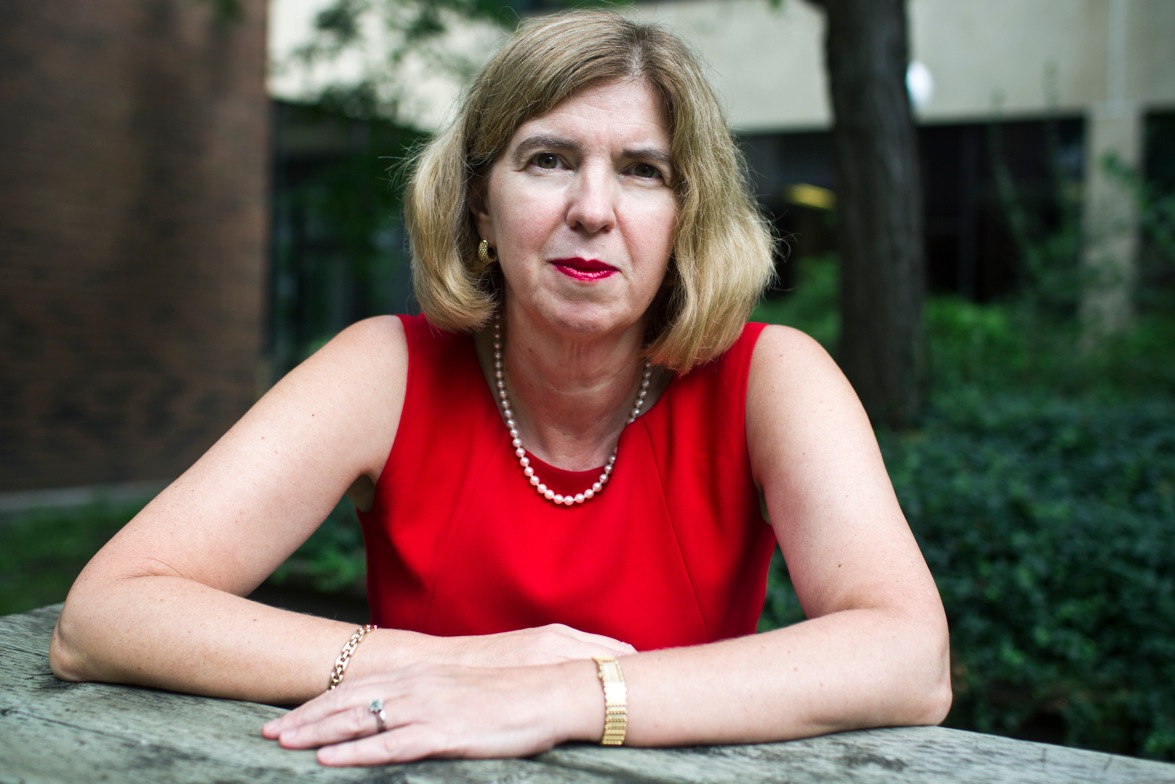 Scientists have discovered rare genetic changes linked to autism spectrum disorder (ASD) may also be responsible for one in 13 cases of schizophrenia.
Scientists have discovered rare genetic changes linked to autism spectrum disorder (ASD) may also be responsible for one in 13 cases of schizophrenia.
In the first study of its kind, University of Toronto scientists at the Centre for Addiction and Mental Health (CAMH) and The Centre for Applied Genomics (TCAG) at The Hospital for Sick Children analyzed the DNA of 459 Canadian adults with schizophrenia to detect rare genetic changes.
“We found a significant number of large rare changes in the chromosome structure,” said Professor Anne Bassett, Canada Research Chair in Schizophrenia Genetics and Genomic Disorders at the University of Toronto and Director of CAMH’s Clinical Genetics Research Program.
“We expect that up to eight per cent of schizophrenia may be caused in part by such genetic changes — roughly one in every 13 people or 7.6 per cent of people with the illness.”
The research team also developed a systematic approach to the discovery and analysis of new, smaller rare genetic changes leading to schizophrenia, providing dozens of new leads for scientists studying the illness.
“We identified smaller changes in chromosome structure that may play an important role in schizophrenia — and that these often involve more than one gene in a single person with the illness,” said Bassett, who is also a Clinician Scientist in the Campbell Family Mental Health Research Institute.
“Moving forward, we will be able to study common pathways affected by these different genetic changes and examine how they affect brain development. The more we know about where the illness comes from, the more possibilities there will be for the development of new treatments,” Bassett said.
The research team also suggests that clinical DNA (genome-wide microarray) testing — the method researchers used to analyze patient DNA — may be useful in demystifying one of the most complex and stigmatized human diseases: schizophrenia.
“We have seen the success clinical microarray testing has had in making sense of ASD for families, and we think the same could be true for schizophrenia,” said Stephen Scherer, Director of University of Toronto’s McLaughlin Centre and TCAG.
The study is published in the current issue of Human Molecular Genetics, and was funded by the Canadian Institutes of Health Research (CIHR).

Optimize this page for search engines by customizing the Meta Title and Meta Description fields.
Use the Google Search Result Preview Tool to test different content ideas.

Select a Meta Image to tell a social media platform what image to use when sharing.
If blank, different social platforms like LinkedIn will randomly select an image on the page to appear on shared posts.
Posts with images generally perform better on social media so it is worth selecting an engaging image.

Error message
No matching provider found.U of T-led study cracks universal RNA code, suggests a new cause for autism
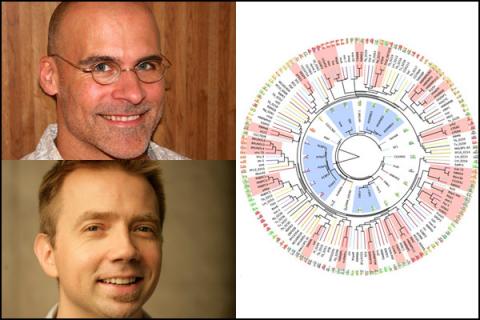 TORONTO — An international team led by University of Toronto scientists Timothy Hughes and Quaid Morris has unraveled most of a code that controls how DNA becomes the proteins that make up cells, a process called gene expression and, in the process, uncovered a possible cause of autism
TORONTO — An international team led by University of Toronto scientists Timothy Hughes and Quaid Morris has unraveled most of a code that controls how DNA becomes the proteins that make up cells, a process called gene expression and, in the process, uncovered a possible cause of autism
The discovery cracks the “RNA control code,” which dictates how RNA — a family of molecules that mediates DNA expression — moves genetic information from DNA to create proteins.
“For the first time, we understand the language of a code that is essential to gene processing,” said Quaid Morris, a Professor in U of T’s Donnelly Centre for Cellular and Biomolecular Research and the Banting and Best Department of Medical Research. “Many human diseases are due to defects in this code, so figuring out what it means is crucial to creating new treatments for many conditions.”
The scientific journal Nature published the study results in its July 11, 2013 issue.
The researchers translated the code with a biochemical technique developed by a research scientist in Hughes’ lab, Debashish Ray, and a student in Morris’s lab, Hilal Kazan. The team defined the meaning of “words” in RNA, allowing identification of patterns in RNA molecules that proteins use to control RNA processing and movement, which are often altered in disease.
One protein they looked at may explain some of the symptoms in children with autism. The researchers found that RBFOX1, a protein often turned off in the brains of patients, ensures the activity of genes important for the function of nerve cells in the brain.
“This was a surprising finding, because we knew RBFOX1 controls gene expression, but had no idea it also stabilizes RNA,” said Tim Hughes, a Professor in the Department of Molecular Genetics and the Donnelly Centre. “It’s a good example of the predictive power of the RNA control code, which we think will really open up the field of gene regulation.”
Hughes said the work also shows that the RNA control code may be easier to interpret than a similar control code in DNA. Researchers have been struggling for years to understand this DNA control code, but the new results suggest RNA control could offer a more fruitful area of inquiry, with autism as just one example.
The team is now working with autism experts to assess the potential of RBFOX1 in autism therapies, and exploring promising leads on the roles of unstudied proteins in many other diseases.
The Canadian Institutes of Health Research and the U.S. National Institutes of Health funded the research, with trainees supported by the Canadian Institute for Advanced Research, National Science and Engineering Research Council of Canada, and the Human Frontier Science Program.

Optimize this page for search engines by customizing the Meta Title and Meta Description fields.
Use the Google Search Result Preview Tool to test different content ideas.

Select a Meta Image to tell a social media platform what image to use when sharing.
If blank, different social platforms like LinkedIn will randomly select an image on the page to appear on shared posts.
Posts with images generally perform better on social media so it is worth selecting an engaging image.
Jim Oldfield

Error message
No matching provider found.Top to Bottom
 Starting October 15th, seven Department of Surgery faculty members will take part in Top to Bottom, a five-week nation-wide fundraising campaign organized by Colon Cancer Canada. The doctors make up ‘Team Toronto’, challenging other teams of surgeons in Calgary and Vancouver to raise the most funds for colon cancer research. Having raised $150,000 last year towards the department's Colon Cancer Canada Research Scholarship, Team Toronto aims to up their game and raise $300,000 this year for the University’s Bernard and Ryna Langer Chair in General Surgery and the Surgeon Scientist Training Program.
Starting October 15th, seven Department of Surgery faculty members will take part in Top to Bottom, a five-week nation-wide fundraising campaign organized by Colon Cancer Canada. The doctors make up ‘Team Toronto’, challenging other teams of surgeons in Calgary and Vancouver to raise the most funds for colon cancer research. Having raised $150,000 last year towards the department's Colon Cancer Canada Research Scholarship, Team Toronto aims to up their game and raise $300,000 this year for the University’s Bernard and Ryna Langer Chair in General Surgery and the Surgeon Scientist Training Program.
“The research scholarship allowed me to expand on my work and move it to the next level,” says Karineh Kazazian, 2012 Colon Cancer Canada Research Award recipient. “Research funding is critical to everything we do.”
Each participating surgeon has an interactive webpage showcasing the funds they’ve raised to date and videos explaining why supporting U of T colon cancer research is so important. The campaign is a friendly challenge across the country, building awareness about colorectal cancer and a call for support of advanced research into the disease.
“Team Toronto is going to wipe Team Calgary and Team Vancouver off the face of the earth with our fundraising,” says Dr. Zane Cohen, as he lays down the gauntlet at the start of the online challenge.
 Starting October 15th, seven Department of Surgery faculty members will take part in Top to Bottom, a five-week nation-wide fundraising campaign organized by Colon Cancer Canada. The doctors make up ‘Team Toronto’, challenging other teams of surgeons in Calgary and Vancouver to raise the most funds for colon cancer research. Having raised $150,000 last year towards the department's Colon Cancer Canada Research Scholarship, Team Toronto aims to up their game and raise $300,000 this year for the University’s Bernard and Ryna Langer Chair in General Surgery and the Surgeon Scientist Training Program.
Starting October 15th, seven Department of Surgery faculty members will take part in Top to Bottom, a five-week nation-wide fundraising campaign organized by Colon Cancer Canada. The doctors make up ‘Team Toronto’, challenging other teams of surgeons in Calgary and Vancouver to raise the most funds for colon cancer research. Having raised $150,000 last year towards the department's Colon Cancer Canada Research Scholarship, Team Toronto aims to up their game and raise $300,000 this year for the University’s Bernard and Ryna Langer Chair in General Surgery and the Surgeon Scientist Training Program.
“The research scholarship allowed me to expand on my work and move it to the next level,” says Karineh Kazazian, 2012 Colon Cancer Canada Research Award recipient. “Research funding is critical to everything we do.”
Each participating surgeon has an interactive webpage showcasing the funds they’ve raised to date and videos explaining why supporting U of T colon cancer research is so important. The campaign is a friendly challenge across the country, building awareness about colorectal cancer and a call for support of advanced research into the disease.
“Team Toronto is going to wipe Team Calgary and Team Vancouver off the face of the earth with our fundraising,” says Dr. Zane Cohen, as he lays down the gauntlet at the start of the online challenge.
 Starting October 15th, seven Department of Surgery faculty members will take part in Top to Bottom, a five-week nation-wide fundraising campaign organized by Colon Cancer Canada. The doctors make up ‘Team Toronto’, challenging other teams of surgeons in Calgary and Vancouver to raise the most funds for colon cancer research. Having raised $150,000 last year towards the department's Colon Cancer Canada Research Scholarship, Team Toronto aims to up their game and raise $300,000 this year for the University’s Bernard and Ryna Langer Chair in General Surgery and the Surgeon Scientist Training Program.
Starting October 15th, seven Department of Surgery faculty members will take part in Top to Bottom, a five-week nation-wide fundraising campaign organized by Colon Cancer Canada. The doctors make up ‘Team Toronto’, challenging other teams of surgeons in Calgary and Vancouver to raise the most funds for colon cancer research. Having raised $150,000 last year towards the department's Colon Cancer Canada Research Scholarship, Team Toronto aims to up their game and raise $300,000 this year for the University’s Bernard and Ryna Langer Chair in General Surgery and the Surgeon Scientist Training Program.
“The research scholarship allowed me to expand on my work and move it to the next level,” says Karineh Kazazian, 2012 Colon Cancer Canada Research Award recipient. “Research funding is critical to everything we do.”
Each participating surgeon has an interactive webpage showcasing the funds they’ve raised to date and videos explaining why supporting U of T colon cancer research is so important. The campaign is a friendly challenge across the country, building awareness about colorectal cancer and a call for support of advanced research into the disease.
“Team Toronto is going to wipe Team Calgary and Team Vancouver off the face of the earth with our fundraising,” says Dr. Zane Cohen, as he lays down the gauntlet at the start of the online challenge.
Visit Top to Bottom to learn how funds will be used and to show your support for Drs. Zane Cohen, Andy Smith, Jacob Langer, Paul Bernick, Marcus Burnstein, Calvin Law and Darlene Fenech as they represent our Department of Surgery and the city of Toronto.
This is the second year U of T’s Department of Surgery will be participating in Top to Bottom. Follow Twitter and Facebook for weekly updates on Team Toronto’s progress.

Optimize this page for search engines by customizing the Meta Title and Meta Description fields.
Use the Google Search Result Preview Tool to test different content ideas.

Select a Meta Image to tell a social media platform what image to use when sharing.
If blank, different social platforms like LinkedIn will randomly select an image on the page to appear on shared posts.
Posts with images generally perform better on social media so it is worth selecting an engaging image.

Error message
No matching provider found.Three Members of U of T Medicine Community Appointed to Order of Canada
Governor General David Johnston has appointed a molecular biologist, a peace builder and a former astronaut, all with ties to the Faculty of Medicine at the University of Toronto, to the Order of Canada.
Drs. Thomas Hudson, Arnold Noyek, and Dafydd Rhys (Dave) Williams were granted Canada’s highest civilian honour for their lifetime achievements.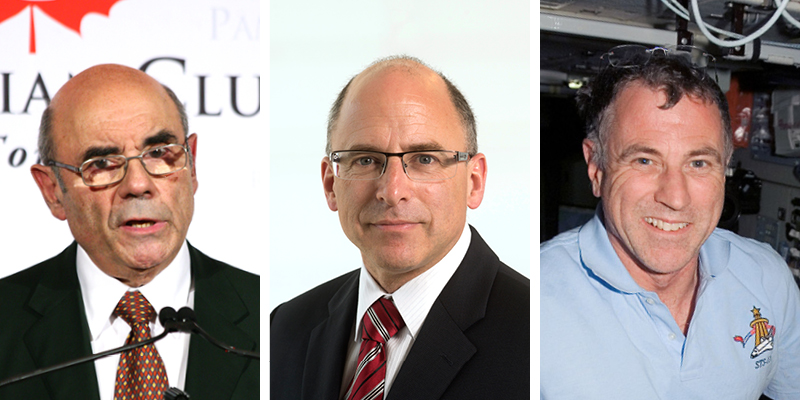
“We are extremely proud of their accomplishments,” said Catharine Whiteside, Dean of the Faculty of Medicine. “From the biology of disease, to building peace around the world and exploring the frontier of space, the extraordinary range and impact of their activities is an inspiration to our students, other faculty members and all Canadians.”
Noyek’s appointment as an Officer recognizes his work setting up programs that screen for hearing problems in thousands of children, and his contributions to peace through international health and education partnerships. The U of T alumnus and Professor in the Department of Otolaryngology - Head & Neck Surgery is the founder of the Canada International Scientific Exchange Program, a volunteer organization that promotes educational exchanges and knowledge-sharing among many countries, particularly in the Middle East.
“Arnold Noyek’s work has made huge contributions both to training health professionals in skills critical to health screening and health promotion, and to creating goodwill and international understanding in a region of the world that desperately needs it,” said Howard Hu, Dean of the Dalla Lana Faculty of Public Health, where Noyek is also a Professor.
Thomas Hudson was appointed as an Officer for his breakthroughs in genome science and leadership in the field of cancer research. Hudson is a Professor in the Departments of Molecular Genetics and Medical Biophysics, and is President and Scientific Director of the Ontario Institute for Cancer Research. The institute runs several major programs including the Ontario Health Study, which looks at how lifestyle, environment and family history combine to affect our health over many years.
Dave Williams was appointed as a Member for his contributions to space exploration and his leadership in enhancing astronaut health and welfare. He was part of two space shuttle missions, and also lived and worked in an underwater ocean lab. Williams is a former lecturer in the Department of Surgery, who completed a residency in emergency medicine at U of T. He is the President and CEO of Southlake Regional Health Centre.

Optimize this page for search engines by customizing the Meta Title and Meta Description fields.
Use the Google Search Result Preview Tool to test different content ideas.

Select a Meta Image to tell a social media platform what image to use when sharing.
If blank, different social platforms like LinkedIn will randomly select an image on the page to appear on shared posts.
Posts with images generally perform better on social media so it is worth selecting an engaging image.
Jim Oldfield
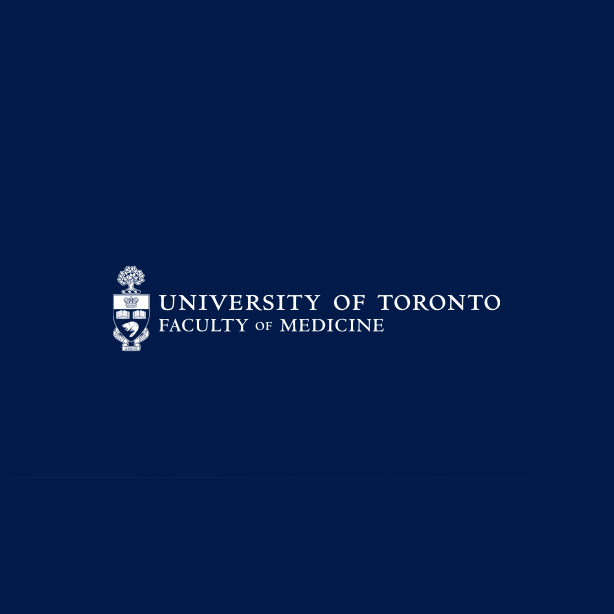
Error message
No matching provider found.Scientists Decipher Cellular ‘Roadmap’ of Disease-Related Proteins
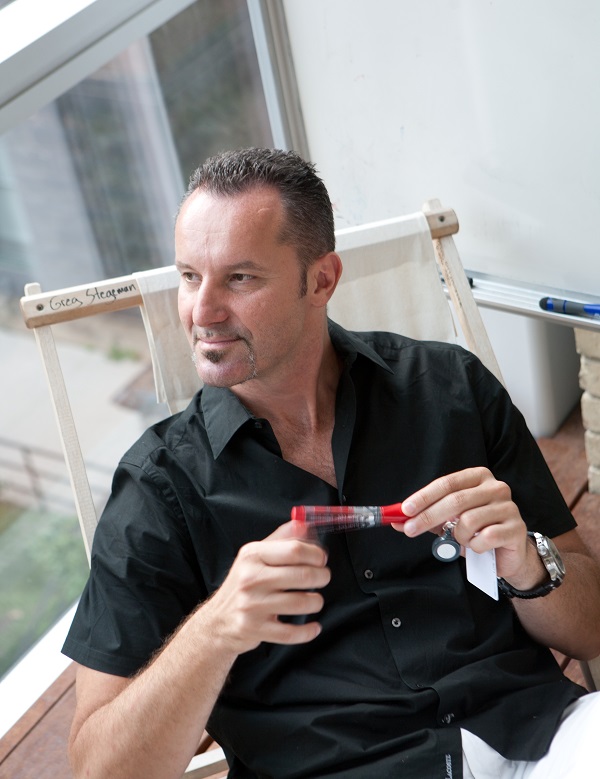 University of Toronto researchers are helping demystify an important class of proteins associated with disease, a discovery that could lead to better treatments for cancer, cystic fibrosis and many other conditions.
University of Toronto researchers are helping demystify an important class of proteins associated with disease, a discovery that could lead to better treatments for cancer, cystic fibrosis and many other conditions.
Igor Stagljar, Professor in the Faculty of Medicine’s Donnelly Centre for Cellular and Biomolecular Research, and his team developed the first roadmap for ATP-binding cassette (ABC) transporter proteins. These proteins are crucial components of every cell, and are also involved in tumor resistance.
Scientists have struggled with understanding how ABC transporter proteins work and communicate with other proteins. Stagljar and his team, including first author Dr. Jamie Snider, have solved the mystery by using Membrane Yeast Two-Hybrid (‘MYTH’) technology to see how these transporter proteins interact with other vital components in the cell.
“Cell systems are complex and we need to have a solid grasp of how the individual pieces fit together in order to understand why certain diseases occur and how to best treat them,” says Stagljar, who is also cross-appointed to the Departments of Biochemistry and Molecular Genetics.
ABC transporter proteins act as cellular gatekeepers by retaining nutrients and expelling toxins from the cell. If these proteins are not working properly, it can cause a number of diseases including: cystic fibrosis, age-related macular degeneration, Tangier disease, and Dubin-Johnson syndrome. ABC proteins can also cause cancer cells to reject chemotherapy drugs which makes treatment less effective.
“Our discovery shows how ABC transporter proteins effect cancer and other diseases, and this knowledge can help us develop better, more targeted drugs. This is truly momentous,” said Stagljar.
The study was published today in Nature Chemical Biology.
Photo credit: Sam Motala

Optimize this page for search engines by customizing the Meta Title and Meta Description fields.
Use the Google Search Result Preview Tool to test different content ideas.

Select a Meta Image to tell a social media platform what image to use when sharing.
If blank, different social platforms like LinkedIn will randomly select an image on the page to appear on shared posts.
Posts with images generally perform better on social media so it is worth selecting an engaging image.
Suniya Kukaswadia

Error message
No matching provider found.The Dalla Lana School of Public Health Becomes a Stand-Alone Faculty
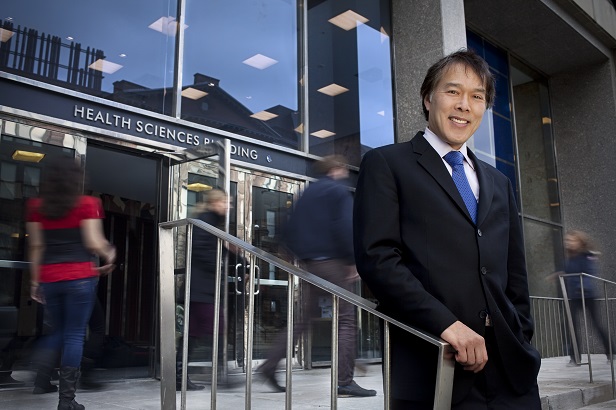 In 1975, the University of Toronto disbanded the School of Public Health.
In 1975, the University of Toronto disbanded the School of Public Health.
In 2008, it was reinstated as the Dalla Lana School of Public Health.
On July 1st, the school became a faculty.
To understand the school’s journey, says Howard Hu, Director of the School since July 2012 and now Faculty Dean, you need to go back to the beginning.
“The story of the faculty is really academic high drama,” says Hu. “It began as one of first three Schools of Hygiene created with grants from the Rockefeller Foundation in the 1920s (Harvard and Johns Hopkins were the others). And very quickly, it became a leader in the growing public health issues of the day: vaccinations, sanitation, nutrition and epidemiology.”
Then, says Hu, funding dropped away. Universal health care came to Canada and it seemed as though immunizations and antibiotics might solve the most pressing public health problems of the day. The university disbanded the school.
“It wasn’t until 2003 and SARS that people saw the urgent need for a coordinated approach to public health. And U of T, which is right at the geographic, political and institutional nexus of public health, is the ideal home for a place like the Dalla Lana.”
Today, the school is a leader in public health education, research and service, receiving more than $30-million in research funding each year. It has one of the country’s largest concentrations of population and public health researchers with expertise in global health, tobacco impacts on health, public health policy, occupational disease and disability, air pollution, genomics, inner-city health and circumpolar health.
The School offers doctoral and masters programs across seven areas of study to nearly 400 students, and trains the next generation of educators, scientists and practitioners who will advance public health in Canada and around the world.
“As a full faculty of public health, we’re better position to compete globally,” Hu continues. “This new designation shows we have an institutional commitment to public health, a critical mass of researchers and a clear plan.”

Optimize this page for search engines by customizing the Meta Title and Meta Description fields.
Use the Google Search Result Preview Tool to test different content ideas.

Select a Meta Image to tell a social media platform what image to use when sharing.
If blank, different social platforms like LinkedIn will randomly select an image on the page to appear on shared posts.
Posts with images generally perform better on social media so it is worth selecting an engaging image.
Nicole Bodnar

Error message
No matching provider found.Art + Science + Technology = Virtual Dreams and Healthy Brains
People attending Nuit Blanche in Toronto this Saturday will have an opportunity to experience ground-breaking neuroscience research led by University of Toronto and Baycrest Health Sciences through My Virtual Dream. One part art exhibit, one part science experiment, this installation brings together art, science and technology by synchronizing brain waves to create a multi-sensory experience — a virtual dream — inside a 60-foot dome.
“My Virtual Dream allows for people from different disciplines and industries, both in arts and science, to come together to unlock brain’s potential and find cure for neurological diseases,” said Alison Buchan, Vice Dean of Research and International Relations in U of T’s Faculty of Medicine
[EMBEDDED YOUTUBE VIDEO: http://www.youtube.com/watch?v=FaZJZwopW1I]
My Virtual Dream will make the newest technologies in neuroscience available to the general public. “Community involvement and outreach is a big part of our mandate at the Faculty of Medicine. This exhibit is a great way to engage the general public in our scholars’ projects,” said Buchan.
Nuit Blanche visitors will connect their brain waves to The Virtual Brain, a research tool that replicates the complex functions of a human brain. By relaxing or concentrating, The Virtual Brain will record participants’ brain waves which will in turn alter images appearing on the walls of the dome and create their very own dream.
“What would you say to your own brain if you could talk to it?” is just one of the philosophical questions Randy McIntosh asked when he began work on this exhibit.
McIntosh is a Professor in U of T’s Institute of Medical Science, Vice-President of Research at Baycrest Health Sciences and Director of Baycrest’s Rotman Research Institute. He aims to develop software based on The Virtual Brain that would interpret brain activity and help doctors better understand how a patient’s brain has been damaged by dementia, epilepsy, stroke and other disorders, pointing to more effective, targeted treatments.
“We are only starting to understand how to interpret the brain activity and how we could use it in practice. It is exciting for us to collaborate with artists on the My Virtual Dream project as together we can inspire people of all backgrounds to become aware of the brain’s potential and contribute to our research,” said McIntosh.
My Virtual Dream premiers at Scotiabank Nuit Blanche on October 5 at 7 p.m. and ends at 7 a.m. on October 6 at the corner of University Avenue and College Street.

Optimize this page for search engines by customizing the Meta Title and Meta Description fields.
Use the Google Search Result Preview Tool to test different content ideas.

Select a Meta Image to tell a social media platform what image to use when sharing.
If blank, different social platforms like LinkedIn will randomly select an image on the page to appear on shared posts.
Posts with images generally perform better on social media so it is worth selecting an engaging image.
Vitaly Kazakov